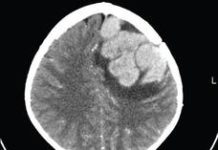On 10 August 2022, the US Food and Drug Administration (FDA) granted regular approval to capmatinib (Tabrecta, Novartis Pharmaceuticals Corp.) for adult patients with metastatic non-small cell lung cancer (NSCLC) whose tumours have a mutation leading to mesenchymal-epithelial transition (MET) exon 14 skipping, as detected by an FDA-approved test.
Capmatinib was previously granted accelerated approval for the same indication on 6 May 2020, based on initial overall response rate (ORR) and duration of response (DoR) in the GEOMETRY mono-1 study (NCT02414139), a multicentre, non-randomised, open-label, multi-cohort study. The conversion to regular approval was based on data from an additional 63 patients, as well as an additional 22 months of follow-up time to assess DoR and verify clinical benefit.
Efficacy was demonstrated in 160 patients with metastatic NSCLC with a mutation leading to MET exon 14 skipping. Patients received capmatinib 400 mg orally twice daily until disease progression or unacceptable toxicity.
The primary efficacy measures were ORR and DoR as determined by a Blinded Independent Review Committee. Among 60 treatment-naïve patients, ORR was 68% (95% confidence interval [CI] 55, 80) with a DoR of 16.6 months (95% CI 8.4, 22.1). Among 100 previously treated patients, ORR was 44% (95% CI 34, 54) with a DoR of 9.7 months (95% CI 5.6, 13).
The median age of patients was 71 years (48 to 90). Selected demographics were reported as follows: 61% female, 77% White, 61% never smoked, 83% had adenocarcinoma, and 16% had CNS metastases. Among previously treated patients, 81% received one, 16% received two, and 3% received three prior lines of systemic treatment. Amongst previously treated patients, 86% received prior platinum-based chemotherapy.
The most common adverse reactions (≥20%) in patients were oedema, nausea, musculoskeletal pain, fatigue, vomiting, dyspnoea, cough, and decreased appetite.
The recommended capmatinib dose is 400 mg orally twice daily with or without food.
Full prescribing information for Tabrecta is available here.
This review was conducted under Project Orbis, an initiative of the FDA Oncology Center of Excellence (OCE). Project Orbis provides a framework for concurrent submission and review of oncology drugs among international partners. For this review, FDA collaborated with the Australian Therapeutic Goods Administration. The application reviews may be ongoing at the other regulatory agencies.
This review used the Assessment Aid, a voluntary submission from the applicant to facilitate the FDA’s assessment.
This application was granted priority review and breakthrough designation.
Healthcare professionals should report all serious adverse events suspected to be associated with the use of any medicine and device to FDA’s MedWatch Reporting System.
For assistance with single-patient INDs for investigational oncology products, healthcare professionals may contact OCE’s Project Facilitate.








